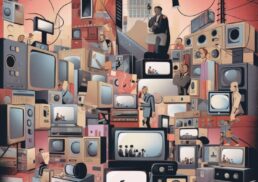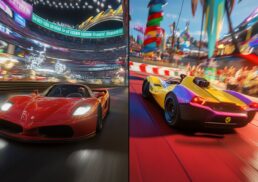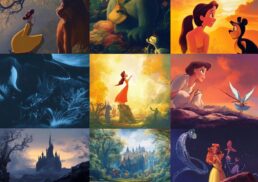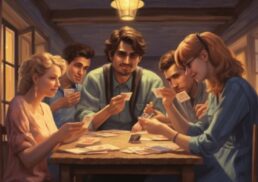
Animated storytelling has consistently captivated audiences across generations, utilizing imaginative visuals and compelling narratives to create a unique form of engagement.
This article examines the popularity and impact of animated films, tracing their evolution from traditional techniques to the advanced digital methods that characterize the current landscape.
It highlights industry leaders such as Pixar, renowned for its innovative computer animation, and Studio Ghibli, esteemed for its captivating hand-drawn artistry.
We invite readers to explore the unique collaborations, cultural influences, and enduring themes that contribute to the profound power of animated storytelling.
Table of Contents
The Power of Animated Storytelling
Animated storytelling possesses a distinct ability to transcend age and cultural boundaries, engaging audiences from childhood through adulthood.
Renowned studios such as Pixar and Studio Ghibli have perfected the craft of infusing magic into their narratives, developing relatable characters and intricate settings that evoke profound emotions and create lasting experiences.
The success of films like Toy Story and Spirited Away illustrates how animation can elevate ordinary life into extraordinary adventures, enabling viewers to explore diverse realms filled with imagination and artistry.
Why Animated Films are Popular and Impactful
Animated films resonate with audiences due to their capacity to evoke nostalgia and convey complex emotions through creative storytelling.
These vibrant films often present relatable characters that embody both innocence and depth, effectively bridging generational gaps in ways that live-action cinema often struggles to achieve.
For example, films such as “Toy Story” and “Inside Out” not only captivate younger viewers with their whimsical adventures but also explore themes of friendship, loss, and the intricacies of growing up, which resonate profoundly with adult audiences.
By integrating elements of childhood wonder alongside mature emotional narratives, animated films create a distinctive environment where viewers of all ages can reflect on their experiences and personal development, fostering lasting connections and meaningful memories.
The Evolution of Animation Studios
The evolution of animation studios represents a significant progression from traditional hand-drawn techniques to the innovative digital methods utilized by contemporary leaders such as Pixar and Studio Ghibli.
This transformation has not only revolutionized visual effects within animated films but has also broadened the creative possibilities for storytelling and character design.
Advances in CGI and 2D animation techniques have enabled filmmakers to create distinct worlds and compelling narratives that resonate with audiences across multiple generations.
From Traditional to Digital Techniques
 The transition from traditional animation to digital techniques has significantly transformed the storytelling process in animated films, with studios such as Pixar at the forefront of this evolution.
The transition from traditional animation to digital techniques has significantly transformed the storytelling process in animated films, with studios such as Pixar at the forefront of this evolution.
This advancement has profoundly reshaped the art form, enabling the creation of richer visuals and more intricate character development than ever before. Traditional methods, often characterized by hand-drawn frames, demanded considerable labor and time but offered a distinctive warmth and stylistic charm.
In contrast, contemporary computer-generated imagery (CGI) allows animators to produce lifelike textures and dynamic movements that were previously unattainable.
Films such as “Toy Story” serve as prime examples of this transformation, demonstrating how 3D technology injects emotional depth into characters while maintaining engaging narratives.
Additionally, 2D animation has also adopted digital tools, successfully blending classic aesthetics with innovative techniques to enhance storytelling. This is evident in projects like “Spider-Man: Into the Spider-Verse,” where a convergence of diverse animation styles creates a unique visual experience.
Pixar: The Pioneer of Computer Animation
Pixar has positioned itself as a leader in the field of computer animation, significantly transforming the film industry through its innovative techniques and iconic films that seamlessly integrate storytelling with advanced technology.
Beginning with the groundbreaking release of Toy Story in 1995 and extending to the emotional richness of Finding Nemo, Pixar’s mastery in animation demonstrates a remarkable capacity to engage audiences by creating relatable characters and immersive environments.
The studio’s dedication to pushing the limits of creativity serves as a source of inspiration for both viewers and aspiring filmmakers.
Innovative Techniques and Iconic Films
Pixar’s innovative techniques in animation have established a high standard within the industry, with films such as Toy Story and Finding Nemo exemplifying the power of computer-generated imagery (CGI) in storytelling.
Through the meticulous crafting of memorable characters and rich narratives, the studio has mastered the art of emotive storytelling that resonates profoundly with audiences of all ages.
Their distinctive approach to character design not only brings animation to life but also creates relatable figures with whom viewers can empathize.
The pioneering use of visual effects enhances the aesthetic appeal of each film, enriching the overall cinematic experience. Iconic films produced by this studio have captivated the hearts of millions and have significantly influenced industry standards, prompting other creators to elevate their storytelling techniques and engage viewers in a deeper, more meaningful manner.
Studio Ghibli: The Master of Hand-Drawn Animation
Studio Ghibli has established itself as a preeminent figure in the realm of hand-drawn animation, captivating audiences with its distinctive style and significant cultural impact, largely attributed to the visionary filmmakers Hayao Miyazaki and Isao Takahata.
Works such as Spirited Away and My Neighbor Totoro exemplify the studio’s remarkable capacity to intertwine rich narratives with intricate artistry, eliciting profound emotions and looking into themes that resonate across generations.
This artistic prowess has not only transformed the landscape of animation but has also cemented Studio Ghibli’s enduring legacy in the annals of cinematic history.
Unique Style and Cultural Influence
The distinctive style of Studio Ghibli is marked by its exceptional hand-drawn animation and profound cultural influences, reflecting the vision of esteemed filmmakers such as Hayao Miyazaki.
Characterized by intricate details and vibrant colors, these artistic elements cultivate a whimsical yet poignant atmosphere that engages audiences across various age groups.
The narratives frequently draw inspiration from Japanese folklore and mythology, incorporating cultural nuances that enhance the storytelling. For example, films such as “Spirited Away” delve into themes of identity and personal growth through characters who traverse fantastical realms, while “My Neighbor Totoro” emphasizes the beauty of nature and the innocence of childhood.
The character designs are equally remarkable, showcasing expressive features and relatable traits that resonate with viewers. This makes Ghibli films not merely animations, but immersive experiences that celebrate the complexities of life.
The Magic of Collaborations and Crossovers
The power of collaborations and crossovers in animated films presents new opportunities for storytelling, enabling studios such as Pixar and Studio Ghibli to merge their distinctive styles and create memorable experiences for audiences.
These partnerships can yield innovative narratives that integrate the finest elements of both studios, resulting in films that appeal to viewers of all ages. The potential for cross-cultural storytelling enhances the animation landscape, facilitating a diverse array of emotions and intricate world-building.
Successful Collaborations Between Pixar and Studio Ghibli
While Pixar and Studio Ghibli each possess unique artistic methodologies, the prospect of potential collaborations between these two prominent entities generates considerable interest among animation enthusiasts, as both have made significant contributions to the realm of animated cinema.
Envisioning the integration of Pixar’s advanced technology and narrative creativity with Ghibli’s enchanting realism and profound emotional depth presents a wealth of possibilities for storytelling. One might imagine a narrative where fantastical creatures inhabit a world reminiscent of the intricately crafted environments showcased in both studios’ previous works.
The profound emotional resonance characteristic of Pixar’s characters could harmoniously intertwine with the environmental themes emphasized in Ghibli’s stories, creating a narrative that delves into both the enchantment of childhood and the complexities of maturation, ultimately illustrating the notion that every story encompasses multiple layers.
Such collaborations could pave the way for innovative animation techniques and storytelling frameworks that enhance the viewer’s experience, leading to films capable of captivating diverse audiences worldwide.
Lessons from Animated Storytelling
Animated storytelling provides significant insights that resonate with audiences, encapsulating themes of creativity, nostalgia, and the emotional depth of narratives that reflect both the joys of childhood and the intricacies of adulthood.
Through the medium of animation, filmmakers have the ability to convey messages that captivate viewers and stimulate thoughtful discourse regarding the human experience.
The enduring relevance of these themes guarantees that animated films continue to hold significance and meaning across diverse generations.
Themes and Messages in Popular Animated Films
Popular animated films often convey profound themes and messages that resonate significantly with audiences, underscoring the emotional impact of storytelling.
These films frequently examine universal concepts such as friendship, courage, and the significance of self-discovery. For example, in Pixar’s “Inside Out,” the intricacies of human emotions are meticulously portrayed, emphasizing the importance of embracing both joy and sadness as integral components of the human experience.
Similarly, Disney’s “The Lion King” illustrates a journey of personal growth and responsibility, as Simba learns the values of legacy and redemption.
These recurring themes not only serve to entertain but also engage viewers in meaningful reflections on their own lives, fostering a deeper understanding of their emotions and relationships.
Learn more, The Magic of Studio Ghibli: A Deep Dive into Its Films, Art, …









